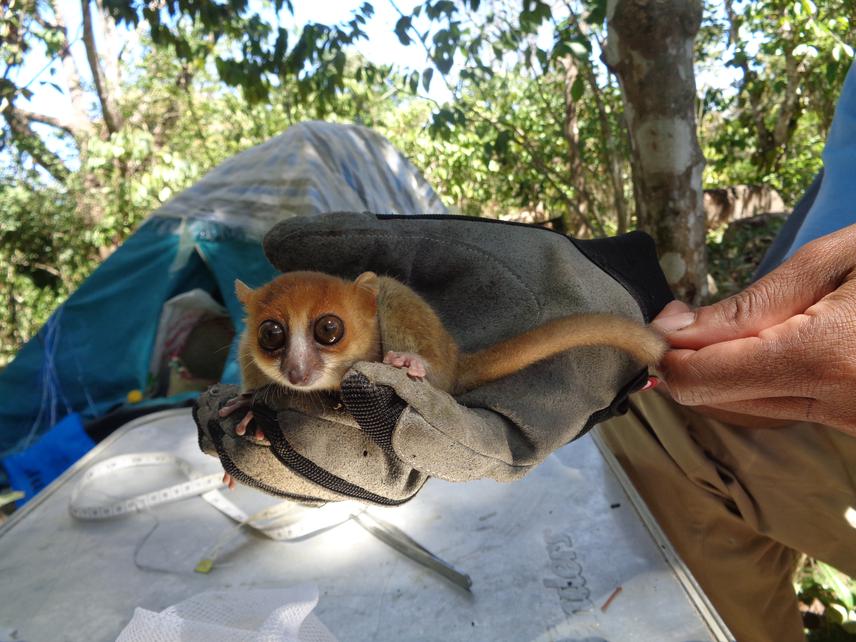Irène Alida Frankline Hasiniaina
The overall aim of our study is to enhance our present knowledge on the use of bioacoustics as a non-invasive tool to diagnose nocturnal lemur species and to assess and monitor nocturnal lemur communities in Madagascar.

The primates of Madagascar are all endemic to the island and they represent a spectacular radiation. Nowadays, all the lemurs, in particular those with small ranges, are strongly endangered, in particular by deforestation and bush fire.
Mouse lemurs are nocturnal, arboreal and often show highly restricted distributions in the tropical forests of Madagascar. Vocalizations play major role in their social life. Preliminary studies showed species-specific signatures in their vocalizations.
Within this study we aim to extend our previous knowledge to bioacoustically unknown mouse lemur species by exploring the link between vocal acoustics, behaviour and genetics and geographic information. This is a necessary prerequisite to assess on the long run the suitability of bioacoustics as a tool to identify and monitor species diversity of nocturnal lemur communities non-invasively.
I will address the following questions:
1) To which extent do genetically defined species show differences in specific acoustic and morphological traits and represent “biological” species according to the ”biological species concept”?
2) To which extent do species in sympatry diverge more than in allopatry as predicted by research on insects, frogs and birds?
3) To which extent does acoustic, morphological and geographic distance correlates with genetic distance?